Office of Research & Development |
 |
Office of Research & Development |
 |
The Paul B Magnuson Award is presented annually to a VA RR&D investigator who exemplifies the entrepreneurship, humanitarianism, and dedication to veterans displayed by Dr. Magnuson during his career. The award was established in 1998 in recognition of the importance of rehabilitation research within the VA Health Care System. The award consists of a one-time award of $5,000 to an individual, with $50,000 for up to 3 years to supplement ongoing peer-reviewed research, and a celebratory plaque. This award is the highest honor for VA rehabilitation investigators.
The establishment of this award honors the life and legacy of Paul B Magnuson, M.D., who as a bone and joint surgeon continuously sought new treatments and devices for assisting his patients as they faced unique situations presented by their disability. As a physician, Dr. Magnuson saw his duty, not only as curing, but also as restoring a patient "to his family, his job, and his life." He was a champion of the underdog and as an advocate for veterans was the architect of the Department of Veterans Affairs Health Care System as it is known today.
The following Rehabilitation R&D researchers have won this coveted award:
Nominations for the 2025 Paul B. Magnuson Award are being accepted through September 3, 2025. For more details see: Program Guide 1202.08 Research Achievement Awards and Instructions for Electronic Submission of Award Applications.
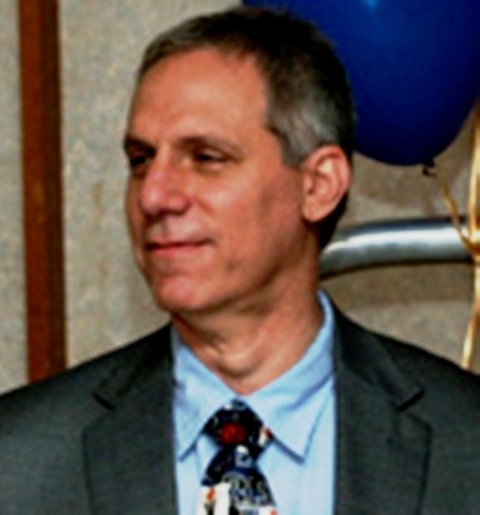 Charles E. Levy, MD - Received the Paul B. Magnuson Award in recognition of his deep compassion for the disabled, his tireless commitment to disabled Veterans as a physician, teacher, mentor, leader of Veterans support organizations, and a remarkable innovator in programs designed to improve the independence and mobility of disabled Veterans, including prosthetic care, power-assist wheelchairs, telemedicine (the Low Activity of Daily Living Program and the Rural Veterans Tele-Rehabilitation Initiative) and virtual reality based approaches to rehabilitation. Dr. Levy is the Chief of the Physical Medicine and Rehabilitation Service at the North Florida/South Georgia Veterans Health System (NF/SG VHS), Co-Director, CINDRR Gainesville, and holds an appointment as an adjunct Associate Professor in the Department of Occupational Therapy, College of Public Health and Health Professions, University of Florida. Dr. Levy is leading the effort in the NF/SG VHS to care for OEF/OIF/OND Veterans with mild traumatic brain injury (mTBI) and/or PTSD. His ongoing interests include wheeled mobility, and the use of interactive virtual world environments and virtual humans to treat cognitive and affective impairments in returning combat Veterans. Dr. Levy is also active as Chairman of the Advisory Board for the Center for Arts in Healthcare, Research and Education at the University of Florida, and a Charter Member of the Advisory Board for the College of Orthotics and Prosthetics at St. Petersburg College. Dr. Levy's work in telerehabilitation has been recognized by his receipt of the 2011 award, VHA Systems Redesign Champion Awards, Outpatient Category, for the VISN8 Rural Veterans Tele-Rehabilitation Systems Redesign Team.
Charles E. Levy, MD - Received the Paul B. Magnuson Award in recognition of his deep compassion for the disabled, his tireless commitment to disabled Veterans as a physician, teacher, mentor, leader of Veterans support organizations, and a remarkable innovator in programs designed to improve the independence and mobility of disabled Veterans, including prosthetic care, power-assist wheelchairs, telemedicine (the Low Activity of Daily Living Program and the Rural Veterans Tele-Rehabilitation Initiative) and virtual reality based approaches to rehabilitation. Dr. Levy is the Chief of the Physical Medicine and Rehabilitation Service at the North Florida/South Georgia Veterans Health System (NF/SG VHS), Co-Director, CINDRR Gainesville, and holds an appointment as an adjunct Associate Professor in the Department of Occupational Therapy, College of Public Health and Health Professions, University of Florida. Dr. Levy is leading the effort in the NF/SG VHS to care for OEF/OIF/OND Veterans with mild traumatic brain injury (mTBI) and/or PTSD. His ongoing interests include wheeled mobility, and the use of interactive virtual world environments and virtual humans to treat cognitive and affective impairments in returning combat Veterans. Dr. Levy is also active as Chairman of the Advisory Board for the Center for Arts in Healthcare, Research and Education at the University of Florida, and a Charter Member of the Advisory Board for the College of Orthotics and Prosthetics at St. Petersburg College. Dr. Levy's work in telerehabilitation has been recognized by his receipt of the 2011 award, VHA Systems Redesign Champion Awards, Outpatient Category, for the VISN8 Rural Veterans Tele-Rehabilitation Systems Redesign Team.
 Linda Resnik, PT, Ph.D. - Received the Paul B. Magnuson Award in recognition of her outstanding work with the Department of Veterans Affairs (VA) Study in the Design and Evaluation of Advanced Upper Limb Prostheses and Controls for the DEKA prosthetic arm, her work in the Development and Evaluation of Rehabilitation Outcomes Measures of Veteran community integration, and her leadership in the Collaborative Research Between VA and the Department of Defense (DoD) in the development of the VA/DoD Collaboration Guidebook for Healthcare Research.
Linda Resnik, PT, Ph.D. - Received the Paul B. Magnuson Award in recognition of her outstanding work with the Department of Veterans Affairs (VA) Study in the Design and Evaluation of Advanced Upper Limb Prostheses and Controls for the DEKA prosthetic arm, her work in the Development and Evaluation of Rehabilitation Outcomes Measures of Veteran community integration, and her leadership in the Collaborative Research Between VA and the Department of Defense (DoD) in the development of the VA/DoD Collaboration Guidebook for Healthcare Research.
Dr. Linda Resnik is a VA Rehabilitation Research and Development Service (RR&D) Research Career Scientist and Professor (Research) in the Department of Health Services, Policy and Practice in the Brown University School of Public Health. She is also Director of Focus Area 2: Restoration of Motor Function: Translating advanced arm prosthetics for limb loss in the VA RR&D funded Center for Neurorestoration and Neurotechnology (CfNN) based at the Providence VA Medical Center. Her research is informed by a 20 year career as a physical therapy clinician, educator, consultant, and community leader. Motivated to address the scarcity of clinically oriented rehabilitation research, she returned to graduate school and completed a doctoral degree in physical therapy. Upon graduation, she pursued additional training in research methods through a postdoctoral fellowship at Brown University's Center for Gerontology and Health Care Research. In 2004, after completing her postdoctoral fellowship, she was appointed Assistant Professor (Research) in the Department of Community Health. In 2004, she was funded by the VA as a core investigator in two new VA research Centers; an HSR&D Targeted Research Enhancement Program (TREP) and an RR&D Center Award and became a VA Research Health Scientist. In 2009, she was promoted to Associate Professor (Research) in the Department of Community Health (subsequently the Department of Health Services, Policy and Practice). In 2014, she became a VA RR&D Research Career Scientist. In 2015 she was promoted to full professor in her academic department.
Dr. Resnik's selfless service to Veterans and Service Members is evident from her work which addresses three important areas of rehabilitation that have specific relevance to Veterans and Service Members with disabilities. These are: 1) design and evaluation of advanced upper limb prostheses and controls; 2) development and evaluation of rehabilitation outcomes measures; 3) study of delivery and effectiveness of rehabilitation services. Additionally, Dr. Resnik has been a leader in promoting collaborative research between VA and DoD.
Dr. Resnik has been at the forefront of VA efforts to advance technology for upper limb amputees. She is a recognized leader in the area of rehabilitation health services research who has helped foster an appreciation for the team approach to rehabilitation of the upper limb amputee. She has made many significant scientific contributions related to the development, evaluation and deployment of standardized outcome measures. Her career contributions in addressing critical research areas common DoD and VA exemplifies the entrepreneurship, humanitarianism, and dedication to Veterans displayed by Dr. Magnuson during his career.
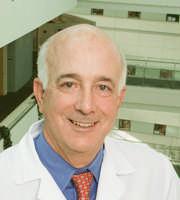 <David J. Fink, MD, received the Paul B. Magnuson Award for his pioneering investigations to develop and test viral gene therapy for intractable pain, peripheral neuropathy, and spinal cord injury. Dr. Fink has made bold advances based on meticulous laboratory studies to deliver novel treatments to patients with diseases of the nervous system. Dr. David Fink is a neurologist in Ann Arbor, Michigan and is affiliated with multiple hospitals in the area, including University of Michigan Hospitals and Health Centers and Veterans Affairs Ann Arbor Healthcare System. Dr. David Fink is Robert Brear Professor and Chair of the Department of Neurology at the University of Michigan. He received a BS in Psychology from Yale College and an MD degree from Harvard Medical School. He completed residencies in internal medicine at the Massachusetts General Hospital in Boston and in neurology at the University of California, San Francisco where he was chief resident during his last year. Between clinical residencies he spent three years as a post-doctoral research fellow with Hal Gainer in the Laboratory of Neurochemistry at the National Institutes of Health in Bethesda. Dr. Fink joined the Department of Neurology at the University of Michigan in 1982, moved to the University of Pittsburgh in 1994 and returned to Michigan in 2004 as Chair of the Department. He is Board Certified in Internal Medicine and in Neurology. Dr. Fink has worked with Dr. Mata for more than 25 years in studies of neuronal cell biology and in the development of HSV-mediated gene transfer for the treatment of diseases of the nervous system.
<David J. Fink, MD, received the Paul B. Magnuson Award for his pioneering investigations to develop and test viral gene therapy for intractable pain, peripheral neuropathy, and spinal cord injury. Dr. Fink has made bold advances based on meticulous laboratory studies to deliver novel treatments to patients with diseases of the nervous system. Dr. David Fink is a neurologist in Ann Arbor, Michigan and is affiliated with multiple hospitals in the area, including University of Michigan Hospitals and Health Centers and Veterans Affairs Ann Arbor Healthcare System. Dr. David Fink is Robert Brear Professor and Chair of the Department of Neurology at the University of Michigan. He received a BS in Psychology from Yale College and an MD degree from Harvard Medical School. He completed residencies in internal medicine at the Massachusetts General Hospital in Boston and in neurology at the University of California, San Francisco where he was chief resident during his last year. Between clinical residencies he spent three years as a post-doctoral research fellow with Hal Gainer in the Laboratory of Neurochemistry at the National Institutes of Health in Bethesda. Dr. Fink joined the Department of Neurology at the University of Michigan in 1982, moved to the University of Pittsburgh in 1994 and returned to Michigan in 2004 as Chair of the Department. He is Board Certified in Internal Medicine and in Neurology. Dr. Fink has worked with Dr. Mata for more than 25 years in studies of neuronal cell biology and in the development of HSV-mediated gene transfer for the treatment of diseases of the nervous system.
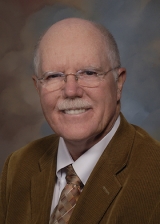 Roy D, Bloebaum, PhD received the Paul B. Magnuson Award for his selfless dedication to the advancement of the rehabilitative health and care of Veterans after joint replacement or limb loss. Dr. Bloebaum has made enormous advances toward the development of the next generation of prosthetic devices with direct bone attachment. As the Co-Director of Bone and Joint Laboratory over the past 23 years, Dr. Bloebaum has been lead- or co-author on over 100 papers on clinically related and translational work. His personal goal is to safely introduce osseointegrated implants (OI) for Veterans and warfighters with limb loss over the next five years. Under Dr. Bloebaum's direction, the Bone and Joint Research Lab was established in 1987. The mission statement of this lab is to "contribute knowledge to the advancement of Orthopaedic, clinical and basic sciences through hypothesis-driven basic and translational research programs, providing education programs for patients, clinical care providers, fellows, researchers, and students, which will lead to improved clinical treatments and VA patient care." Accordingly, over the past 23 years, Dr. Bloebaum has successfully managed over 14 major VA, NIH and DOD grants, 25 graduate students, 10 residents, 5 post doctorate fellows, 27 medical students and 36 undergraduate students. He has collaborated with 11 VA physicians. Dr. Bloebaum has over 30 years experience in establishing implant design criteria for implant attachment to the bone. This work has received national and international awards. The current challenge is to secure a permanent skin seal at the skin-implant interface to prevent periprosthetic OI infection. The BJRL has established models to pursue this goal. The lab is one of the few in the world capable of processing large implants in tissue without disturbing the interface. These are essential skills to assess the skin and bone response to the presence of an implant.
Roy D, Bloebaum, PhD received the Paul B. Magnuson Award for his selfless dedication to the advancement of the rehabilitative health and care of Veterans after joint replacement or limb loss. Dr. Bloebaum has made enormous advances toward the development of the next generation of prosthetic devices with direct bone attachment. As the Co-Director of Bone and Joint Laboratory over the past 23 years, Dr. Bloebaum has been lead- or co-author on over 100 papers on clinically related and translational work. His personal goal is to safely introduce osseointegrated implants (OI) for Veterans and warfighters with limb loss over the next five years. Under Dr. Bloebaum's direction, the Bone and Joint Research Lab was established in 1987. The mission statement of this lab is to "contribute knowledge to the advancement of Orthopaedic, clinical and basic sciences through hypothesis-driven basic and translational research programs, providing education programs for patients, clinical care providers, fellows, researchers, and students, which will lead to improved clinical treatments and VA patient care." Accordingly, over the past 23 years, Dr. Bloebaum has successfully managed over 14 major VA, NIH and DOD grants, 25 graduate students, 10 residents, 5 post doctorate fellows, 27 medical students and 36 undergraduate students. He has collaborated with 11 VA physicians. Dr. Bloebaum has over 30 years experience in establishing implant design criteria for implant attachment to the bone. This work has received national and international awards. The current challenge is to secure a permanent skin seal at the skin-implant interface to prevent periprosthetic OI infection. The BJRL has established models to pursue this goal. The lab is one of the few in the world capable of processing large implants in tissue without disturbing the interface. These are essential skills to assess the skin and bone response to the presence of an implant.
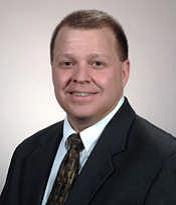 Richard F. Macko, MD received the Paul B. Magnuson Award for his exceptional leadership in developing models of task-oriented exercise to improve motor function, cardiovascular fitness and metabolic health for individuals aging with the chronic disability of stroke and for his work at the VA Maryland Healthcare System, Baltimore VA Medical Center in Central Nervous System investigations characterize brain plasticity in locomotor control of older stroke patients. Dr. Macko is the Academic Director of the University of Maryland School of Medicine Rehabilitation Medicine Division, a standing member of the Center for Medical Rehabilitation Research Grants Panel (NICHD) and VA Rehabilitation Research Grant Panels. His research focuses on developing models of task-oriented exercise to improve motor function, cardiovascular fitness and metabolic health for individuals aging with the chronic disability of stroke. The interdisciplinary approach to this model included investigating mechanisms of exercise-mediated neuromuscular adaptations at the central nervous system and peripheral muscular/metabolic levels. CNS investigations characterize brain plasticity in locomotor control of older hemiparetic stroke patients participating in health promoting treadmill exercise rehabilitation programs that are now shown in randomized studies to improve ambulatory function even decades after stroke. The muscle & metabolic research examines effects of exercise on body composition and molecular mechanisms underlying inflammatory and metabolic abnormalities in hemiparetic muscle, which regulates insulin and glucose metabolism and may be modifiable to reduce recurrent stroke risk.
Richard F. Macko, MD received the Paul B. Magnuson Award for his exceptional leadership in developing models of task-oriented exercise to improve motor function, cardiovascular fitness and metabolic health for individuals aging with the chronic disability of stroke and for his work at the VA Maryland Healthcare System, Baltimore VA Medical Center in Central Nervous System investigations characterize brain plasticity in locomotor control of older stroke patients. Dr. Macko is the Academic Director of the University of Maryland School of Medicine Rehabilitation Medicine Division, a standing member of the Center for Medical Rehabilitation Research Grants Panel (NICHD) and VA Rehabilitation Research Grant Panels. His research focuses on developing models of task-oriented exercise to improve motor function, cardiovascular fitness and metabolic health for individuals aging with the chronic disability of stroke. The interdisciplinary approach to this model included investigating mechanisms of exercise-mediated neuromuscular adaptations at the central nervous system and peripheral muscular/metabolic levels. CNS investigations characterize brain plasticity in locomotor control of older hemiparetic stroke patients participating in health promoting treadmill exercise rehabilitation programs that are now shown in randomized studies to improve ambulatory function even decades after stroke. The muscle & metabolic research examines effects of exercise on body composition and molecular mechanisms underlying inflammatory and metabolic abnormalities in hemiparetic muscle, which regulates insulin and glucose metabolism and may be modifiable to reduce recurrent stroke risk.
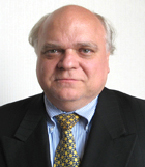 Robert Louis Ruff, MD, PhD is the recipient of the 2008-2009 Magnuson Award, VA's highest honor for rehabilitation investigators in appreciation for his selfless dedication to the care and well-being of Veterans with disabilities, exceptional leadership in developing effective interdisciplinary teams for clinical care and research, instrumental in bringing advances in research to Veteran care, and for his work at Louis Stokes Cleveland VA Health Care System in the Functional Electrical Stimulation Center of Excellence, Rehabilitation, Spinal Cord Injury and Neurology Services and Pain Clinic. Dr. Ruff is the National Director for Neurology in VHA. He received his M.D. and Ph.D. degrees from the University of Washington. His academic rank is Professor of Neurology and Neurosciences at Case Western Reserve University. He has been Chief of the Neurology, Rehabilitation and Spinal Cord Injury Services at the Louis Stokes VAMC. He is the Medical Director of the FES Center in Cleveland, a VA Rehab Research Center of Excellence. Dr. Ruff was the Associate Editor of the journal Neurology from 1994 through 1996. He was a member of the editorial Board of Muscle & Nerve 2004 to 2007. He has been on the editorial board of the Journal of Rehabilitation Research and Development since 1999. He became Deputy Editor of JRRD in 2004 and Editor-in-Chief in from 2005 to 2007. He is now the Deputy Editor of JRRD. His research interests include stroke rehabilitation and combat-related traumatic brain injury.
Robert Louis Ruff, MD, PhD is the recipient of the 2008-2009 Magnuson Award, VA's highest honor for rehabilitation investigators in appreciation for his selfless dedication to the care and well-being of Veterans with disabilities, exceptional leadership in developing effective interdisciplinary teams for clinical care and research, instrumental in bringing advances in research to Veteran care, and for his work at Louis Stokes Cleveland VA Health Care System in the Functional Electrical Stimulation Center of Excellence, Rehabilitation, Spinal Cord Injury and Neurology Services and Pain Clinic. Dr. Ruff is the National Director for Neurology in VHA. He received his M.D. and Ph.D. degrees from the University of Washington. His academic rank is Professor of Neurology and Neurosciences at Case Western Reserve University. He has been Chief of the Neurology, Rehabilitation and Spinal Cord Injury Services at the Louis Stokes VAMC. He is the Medical Director of the FES Center in Cleveland, a VA Rehab Research Center of Excellence. Dr. Ruff was the Associate Editor of the journal Neurology from 1994 through 1996. He was a member of the editorial Board of Muscle & Nerve 2004 to 2007. He has been on the editorial board of the Journal of Rehabilitation Research and Development since 1999. He became Deputy Editor of JRRD in 2004 and Editor-in-Chief in from 2005 to 2007. He is now the Deputy Editor of JRRD. His research interests include stroke rehabilitation and combat-related traumatic brain injury.
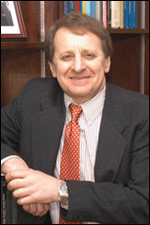 Stephen G. Waxman, MD, PhD is the 2012 Rehabilitation Research and Development Magnuson awardee. Dr. Waxman epitomizes the qualities of a VA intramural investigator, conducting research that bridges basic research and clinical medicine, always with the Veteran in mind. He is the Bridget Marie Flaherty Professor of Neurology, Neurobiology, and Pharmacology at Yale University, and served as Chairman of Neurology at Yale from 1986 until 2009. He founded the Neuroscience and Regeneration Research Center at the West Haven VAMC in 1986, a collaboration between the VA, Yale University and the Paralyzed Veterans of America. Dr. Waxman is also Visiting Professor at University College London and the Institute of Neurology, London.
Stephen G. Waxman, MD, PhD is the 2012 Rehabilitation Research and Development Magnuson awardee. Dr. Waxman epitomizes the qualities of a VA intramural investigator, conducting research that bridges basic research and clinical medicine, always with the Veteran in mind. He is the Bridget Marie Flaherty Professor of Neurology, Neurobiology, and Pharmacology at Yale University, and served as Chairman of Neurology at Yale from 1986 until 2009. He founded the Neuroscience and Regeneration Research Center at the West Haven VAMC in 1986, a collaboration between the VA, Yale University and the Paralyzed Veterans of America. Dr. Waxman is also Visiting Professor at University College London and the Institute of Neurology, London.
Dr. Waxman received his BA from Harvard, and his MD and PhD degrees from Albert Einstein College of Medicine. He held faculty appointments at Harvard Medical School, MIT, and Stanford University, prior to moving to Yale and the West Haven VAMC. Dr. Waxman has received international recognition for his research, which uses tools from the "genomic revolution" to find new therapies that will promote recovery of function after injury to the brain, spinal cord, and peripheral nerves.
Dr. Waxman's research has defined the ion channel architecture of myelinated axons, and demonstrated its importance for conduction in normal axons and for conduction failure after demyelination (Science, 1985). He demonstrated increased expression of sodium channels in demyelinated axons (Science, 1982), identified the sodium channel isoforms responsible for this remarkable neuronal plasticity which supports remission in multiple sclerosis (PNAS, 2004), and delineated the roles of sodium channels in axonal degeneration (PNAS, 1993, 2004). He has also made pivotal discoveries that explain the development and maintenance of neuropathic pain after nerve injury. Most recently, in a keystone leap from laboratory to humans, Waxman carried out molecule-to-man studies combining molecular genetics, molecular biology, and biophysics to demonstrate the contribution of ion channels to human pain (Trends in Molec. Med. 2005; PNAS, 2006).
Dr. Waxman has published more than 600 scientific papers. He has as edited nine books, and is the author of Spinal Cord Compression and of Clinical Neuroanatomy, which has been translated into eight languages. He has served on the editorial boards of many journals including Brain, Annals of Neurology, Trends in Neurosciences, Nature Clinical Neurology, and Trends in Molecular Medicine, and he serves as Editor of The Journal of Physiology and as Editor-in-Chief of Neuroscience Letters. Dr. Waxman has trained more than one hundred and fifty academic neurologists and neuroscientists who work at institutions around the world.
A member of the Institute of Medicine and the National Academy of Sciences, Dr. Waxman has served on numerous advisory boards and councils, including the Board of Scientific Counselors of the NINDS, and the National Research Advisory Committee of VA/ORD. His many awards include the Tuve Award from NIH, the Distinguished Alumnus Award from Albert Einstein College of Medicine, and the Dystel Prize and Wartenberg Award from the American Academy of Neurology. Dr. Waxman has also been honored with The William S. Middleton Award, the highest honor awarded annually by BLR&D to VA biomedical research scientists in recognition of their outstanding scientific contributions and achievements in the areas of biomedical and bio-behavioral research relevant to the healthcare of Veterans. As a testament to the global importance of Dr. Waxman's scientific contributions, he was recognized in Great Britain with The Physiological Society's Annual Prize, an honor that he shares with Nobel Prize laureates Andrew Huxley, John Eccles, and Alan Hodgkin.
The Magnuson Award is named for Paul B. Magnuson, a bone and joint surgeon and chief medical director for VA in the years after World War II. The award is given annually to VA rehabilitation investigators who display entrepreneurship, humanitarianism and dedication to veterans, in the spirit of Magnuson. Known for his pursuit of creative, individualized solutions for meeting the needs of disabled veterans, Magnuson is quoted as saying, “People are no more alike in the shape and functional movements of their bodies and limbs than they are in their faces.”
Magnuson Award winners receive a $5,000 cash award and a plaque, along with an additional $50,000 per year for three years to supplement ongoing peer-reviewed research.
Joseph M. Czerniecki, MD, received the Paul B. Magnuson Award for his research on behalf of Veterans with limb loss. Most recently, Czerniecki's group at the Puget Sound VA has explored one of the most important medical decisions affecting the long-term health and mobility of Veterans and others who undergo lower-limb amputations as a result of diabetes. To help clinicians decide at which level to amputate a leg, the team is developing a prediction model showing how various factors affect outcomes. In other research, Czerniecki has conducted biomechanical analyses to understand the adaptive strategies that amputees use to walk and run. He has also studied the biomechanical and prosthetic factors that influence how much energy is expended by prosthetics users. Czerniecki is associate director of the VA Research Center of Excellence for Limb Loss Prevention and Prosthetic Engineering. He also is a professor at the University of Washington in Seattle.
The Magnuson Award is named for Paul B. Magnuson, a bone and joint surgeon and chief medical director for VA in the years after World War II. The award is given annually to VA rehabilitation investigators who display entrepreneurship, humanitarianism and dedication to veterans, in the spirit of Magnuson. Known for his pursuit of creative, individualized solutions for meeting the needs of disabled veterans, Magnuson is quoted as saying, "People are no more alike in the shape and functional movements of their bodies and limbs than they are in their faces."
Magnuson Award winners receive a $5,000 cash award and a plaque, along with an additional $50,000 per year for three years to supplement ongoing peer-reviewed research.
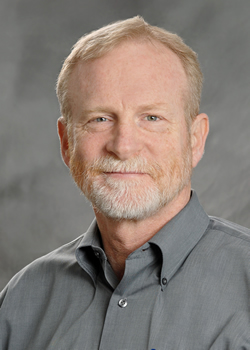 Bruce J. Sangeorzan, MD, an orthopedic surgeon, researcher and director of VA’s Seattle-based Center of Excellence for Limb Loss Prevention and Prosthetic Engineering, is the recipient of the 2007 Magnuson Award, VA’s highest honor for rehabilitation investigators.
Bruce J. Sangeorzan, MD, an orthopedic surgeon, researcher and director of VA’s Seattle-based Center of Excellence for Limb Loss Prevention and Prosthetic Engineering, is the recipient of the 2007 Magnuson Award, VA’s highest honor for rehabilitation investigators.
Sangeorzan’s expertise in foot mechanics and abnormalities has helped establish his center as a leading site for research on amputation prevention and care, particularly in connection with diabetes and peripheral vascular disease. The program’s basic and clinical research is focused on preserving the lower limb and its function and better understanding the deformities that lead to foot ulcers. Another major goal is examining the role of protective footwear and preventive correction of deformities. Researchers at the site also assess the benefits of limb salvage versus amputation and the quality of life of veterans who undergo amputation.
Under Sangeorzan’s leadership, the center, which recently expanded to incorporate a motion-analysis lab, is also working to improve the design of artificial legs by comparing suspension systems and measuring the effect of impact-absorbing prosthetic shanks in below-knee prostheses.
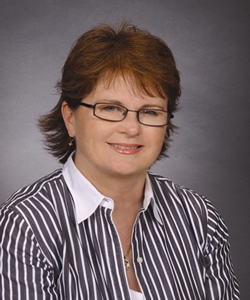
Gonzalez-Rothi, the first woman to receive the award since it was instituted in 1998, was cited, among other accomplishments, for her "ability to bring people together to work toward a common goal." She and her center’s team of biomedical engineers, neurologists, therapists, and psychologists have been credited with helping to show that patients who have had a stroke or other neurological injury can continue to benefit from treatment for longer periods than were previously thought possible.
Gonzalez-Rothi, the first woman to receive the award since it was instituted in 1998, was cited, among other accomplishments, for her "ability to bring people together to work toward a common goal." She and her center’s team of biomedical engineers, neurologists, therapists, and psychologists have been credited with helping to show that patients who have had a stroke or other neurological injury can continue to benefit from treatment for longer periods than were previously thought possible.
In an editorial in the May/June 2006 issue of the Journal of Rehabilitation Research Development (JRRD), Gonzalez-Rothi and coauthor Anna M. Barrett, MD, wrote: “In the past, clinicians and the lay public pervasively believed that stroke recovery was very limited. We are now entering an exciting period in poststroke care in which the time span and extent of continued improvement is extending incredibly. ...The articles in this issue demonstrate the powerful synergy of a scientific culture that seeks to dissolve barriers to continued progress for people with chronic poststroke deficits...”
Gonzalez-Rothi, who has served as president of the International Neuropsychological Society and had a number of other leadership roles in the research and therapy community, has championed the integration of phase 1 and 2 exploratory studies into her center’s research. For example, she and her colleagues reported earlier this year in JRRD on the partially successful results of an intensive “phonomotor rehabilitation” program – a treatment adapted from therapy traditionally used for children with dyslexia – designed to improve the speech of a 73-year–old man who had suffered a stroke 11 years earlier.
Gonzalez-Rothi has also influenced basic and applied scientists to work together more closely to identify new approaches to neurorehabilitation. Her center’s research includes studies on physical, speech and cognitive therapies; drug treatments; brain-imaging techniques to study changes associated with treatment; interventions to enhance daily life for patients with brain injuries; and telecommunication technology to evaluate treatments.
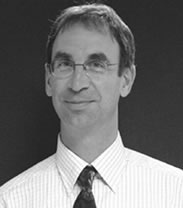 William A. Bauman, M.D., Director of the RR&D Service Center of Excellence for the Medical Consequences of Spinal Cord Injuries (SCI) at the Bronx VA Medical Center, won the distinguished 2005 Paul B. Magnuson Award.
William A. Bauman, M.D., Director of the RR&D Service Center of Excellence for the Medical Consequences of Spinal Cord Injuries (SCI) at the Bronx VA Medical Center, won the distinguished 2005 Paul B. Magnuson Award.
It's the highest honor bestowed upon investigators of the Department of Veterans Affairs, Research and Development Service. Bauman won for his " . commitment and compassion in caring for veterans with disabilities, and for his outstanding research, vision and leadership in characterizing, preventing and treating the medical consequences of spinal cord injury."
Dr. Bauman has devoted the past 16 years to understanding the medical problems that develop in veterans with SCI and to seeking treatments to lessen the impact of these problems on health and quality of life. His current work is an outgrowth of the vision and support of James J. Peters-for whom the Bronx VAMC was renamed on September 26 (see page 4)-and the United Spinal Association (formerly the Eastern Paralyzed Veterans Association).
Dr. Bauman is also the chairman of a VA cooperative study directed at healing pressure ulcers in patients with SCI and a professor of medicine and rehabilitation medicine at the Mount Sinai School of Medicine, New York, N.Y.
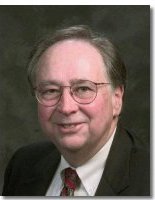 Stephen A. Fausti, PhD, received the Magnuson
Award, VA's highest
award for rehabilitation investigators, in March 2004 at the national
meeting of the American Academy of Audiology in Salt Lake City.
Stephen A. Fausti, PhD, received the Magnuson
Award, VA's highest
award for rehabilitation investigators, in March 2004 at the national
meeting of the American Academy of Audiology in Salt Lake City.
Fausti directs the VA's National Center for Rehabilitative Auditory Research at the Portland VA Medical Center and is a professor in the Department of Otolaryngology at Oregon Health and Science University. He has gained international recognition for his pioneering research and clinical expertise in assessing high-frequency auditory sensitivity and using high-frequency testing for early identification of hearing loss caused by ototoxicity.
Fausti began his VA research career in the 1970s. At the time, animal models had shown that toxic effects on the ears-such as from certain drugs-typically appeared first in the basal region of the cochlea, where higher-frequency sounds are processed. Fausti realized that to detect the earliest stages of hearing loss in patients receiving ototoxic drugs, hearing sensitivity should be monitored at the higher frequencies. These frequencies are not critical for speech recognition, so early detection of problems and a subsequent change in drug regimen could prevent serious functional losses for veterans.
Fausti engineered special audiometers to accomplish this and published the first papers describing the reliability of high-frequency thresholds and their use in early detection of ototoxicity. His work led to national guidelines for early identification and monitoring of ototoxicity. Since many patients being treated with ototoxic drugs are unable to respond to behavioral auditory tests, Fausti developed ways to obtain electrophysiological measures of high-frequency hearing in these patients, independent of their ability to respond actively.
Fausti's work has also improved the understanding and evaluation of tinnitus. The Programmable Auditory Laboratory (PAL) 3000-based on Fausti's original design-will soon be evaluated at several VA medical centers as an automated protocol for measuring tinnitus. Other technology developed by Fausti is now being engineered for compatibility with portable pocket-PC platforms to enhance clinicians' ability to provide early identification and monitoring of ototoxicity.
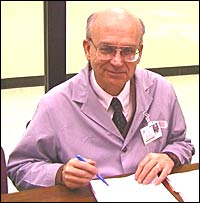 Dudley S. Childress, professor of physical medicine and rehabilitation and of biomedical engineering, has been awarded the Paul B. Magnuson Award by the Research and Development Service of the Department of Veterans Affairs.
Dudley S. Childress, professor of physical medicine and rehabilitation and of biomedical engineering, has been awarded the Paul B. Magnuson Award by the Research and Development Service of the Department of Veterans Affairs.
The highest honor given to VA rehabilitation investigators, the award is conferred on a researcher who "exemplifies the entrepreneurship, humanitarianism and dedication to veterans displayed by Dr. Magnuson." It is named for the Northwestern University surgeon who, as chief medical director of the Veterans Administration after World War II, successfully built the VA Healthcare System. A pioneer in rehabilitation medicine and prosthetics, he also was the founder of the Rehabilitation Institute of Chicago.
Childress directs the Prosthetics Research Laboratory and the Rehabilitation Engineering Research Program, and is executive director of the Prosthetic Orthotic Education Center. He is a research health scientist at the VA Chicago Health Care System-Lakeside Division.
Childress is a widely recognized researcher in the areas of biomechanics, human walking, artificial limbs, orthoses, ambulation aids, and rehabilitation engineering. This work involves the design and development of modern technological systems for persons with limb loss or existing limb disability.
Under Childress' direction, the first systems were developed to control power wheelchairs by switches that are activated by sipping and puffing on a tube or using other minimal movements. His group also developed one of the first environmental control systems enabling persons with paralyzed hands and arms to activate electrical devices such as lights and appliances.
In 1998, through VA assistance, Childress and his colleagues developed a state-of-the-art motion analysis system, one of a few such research tools dedicated to studies of prostheses, orthoses and other ambulation and manipulation aids. Childress has been honored often for his work providing engineering and technical assistance for people with physical disabilities. He is a member of the Institute of Medicine, part of the National Academy of Sciences; a fellow of the Institute of Medicine of Chicago; the International Society for Prosthetics and Orthotics; the Rehabilitation Engineering Society of North America (RESNA); and a founding fellow of the American Institute of Medical and Biological Engineering (AIMBE).
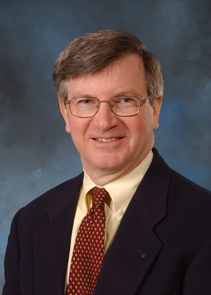 Dr. P. Hunter Peckham receives the Paul B. Magnuson Award, the highest honor for VA Rehabilitation Investigators. The award was presented April 13, 2001 by Mindy Aisen, M.D., Director of Rehabilitation Research and Development (R&D) Service, at the VA National Meeting. The citation of honor reads; In Recognition of Outstanding Rehabilitation Research Dedicated to Seeking New Knowledge to Benefit the Nation's Veterans.
Dr. P. Hunter Peckham receives the Paul B. Magnuson Award, the highest honor for VA Rehabilitation Investigators. The award was presented April 13, 2001 by Mindy Aisen, M.D., Director of Rehabilitation Research and Development (R&D) Service, at the VA National Meeting. The citation of honor reads; In Recognition of Outstanding Rehabilitation Research Dedicated to Seeking New Knowledge to Benefit the Nation's Veterans.
Dr. Peckham is the Director of the Cleveland VA Rehabilitation R&D Center of Excellence on Functional Electrical Stimulation (FES). Through his leadership, use of FES to activate paralyzed muscles has moved from science fiction to reality. Dr. Peckham?s own research focuses on the upper extremity and through it numerous people with high level quadriplegia have found new levels of independence. The overall program that he leads promises to change the lives of people with spinal injuries, stroke, MS or other neurological disorders. His contributions are best summarized by Dr. Heetderks, Scientific Director for Repair and Plasticity at NINDS of the National Institutes of Health, in his letter of recommendation; "Dr. Peckham is a caring, PhD clinician whose work is greatly appreciated by the disabled individuals he is helping, highly respected by the academic community and broadly recognized by the general society as having significant benefit."
The Cleveland FES Center of Excellence is pioneering work in FES to activate the paralyzed muscles of individuals who have sustained a spinal cord injury or stroke. Our goal is to design FES systems that provide improved arm and leg mobility for individuals with stroke, paraplegia or quadriplegia, and help restore bladder and bowel control to individuals with spinal cord injury, stated P. Hunter Peckham, Ph.D., Director of the VA Center of Excellence. "We will direct these resources toward clinical utilization developing FES techniques and training clinicians at multiple sites to use them." Over the past five years nearly 300 individuals, civilian and veterans alike, have participated in a range of research of clinical evaluation projects at the Cleveland FES Center.
The Cleveland FES Center is a consortium that includes the Cleveland VA Medical Center, Case Western Reserve University, and MetroHealth Medical Center. Primary support for the research and development projects is provided by the VA Rehabilitation Research and Development Service, and the National Institutes of Health.